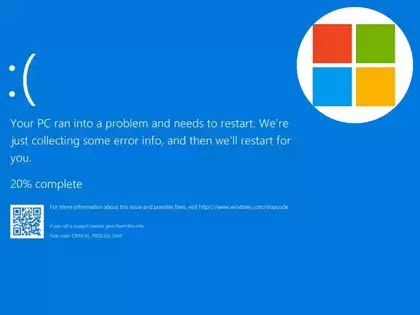Microsoft world wide outage Causing Damages
Microsoft world wide outage Causing Damages

Global Disruption: Microsoft Outage Causes Chaos Worldwide
On July 19, 2024, a massive IT outage originating from Microsoft sent shockwaves across the globe, disrupting numerous industries and daily operations. This unprecedented event affected millions of users, grounding flights, halting banking services, and causing widespread chaos.
The Cause of the Outage
The root of the problem was traced back to a faulty update from cybersecurity provider CrowdStrike, which impacted Microsoft Windows machines worldwide. This update caused connectivity failures between storage and compute resources, also leading to a cascade of issues across various Microsoft 365 apps and services.
Impact on Airlines and Airports
Airlines were among the hardest hit by the outage. Major carriers like Delta, United, and American Airlines experienced significant delays and cancellations. Passengers at airports worldwide faced long queues and confusion as online check-in services and also self-service booths were disabled. In some cases, flights were grounded entirely, causing a ripple effect of delays and also disruptions.
Banking and Financial Services Affected
Banks and financial institutions also felt the brunt of the outage. Services at major banks, including TD Bank and Bank of America, were disrupted, leaving customers unable to access their accounts or perform transactions. This also led to frustration and uncertainty for many individuals and businesses relying on these services.
Media and Telecommunications Disruptions
Media outlets and telecommunications providers were not spared either. Broadcasters like Sky News and various telecom firms reported significant disruptions, affecting their ability to deliver news and services to the public. This further compounded the chaos as people struggled to stay informed about the unfolding situation.
)
Microsoft’s Response and Recovery Efforts
Microsoft quickly acknowledged the issue and began working on rerouting the impacted traffic to alternate systems to alleviate the impact. By early morning, the company reported that the underlying cause of the issue had been fixed, and several Microsoft 365 apps and services were gradually being restored to full functionality. However, residual impacts continued to affect some services, and also Microsoft assured users that they were treating the event with the highest priority.
Legal Implications
- Breach of Contract:
- Service Level Agreements (SLAs): Many businesses rely on Microsoft services under specific SLAs that guarantee a certain level of uptime and performance. The outage could be seen as a breach of these agreements, also leading to claims for compensation.
- Customer Agreements: Individual users and businesses may have agreements with Microsoft that include clauses about service reliability. The outage could trigger breach of contract claims if these agreements were also violated.
- Also Data Protection and Privacy:
- GDPR and Other Regulations: In regions like the EU, the General Data Protection Regulation (GDPR) imposes strict requirements on data protection. If the outage led to data breaches or loss, Microsoft could face fines and legal action under GDPR or similar regulations in other jurisdictions.
- Negligence:
- Duty of Care: Microsoft has a duty of care to ensure its services are reliable and secure. If the outage was due to negligence in maintaining or updating their systems, also affected parties could potentially sue for damages.
Potential Lawsuits
- Class Action Lawsuits:
- Affected Users and Businesses: Given the scale of the outage, it’s possible that groups of affected users and businesses could band together to file class action lawsuits against Microsoft. These lawsuits could seek compensation for financial losses, business interruptions, and also other damages.
- Also Individual Lawsuits:
- Specific Claims: Individual businesses or users who suffered significant losses might file their own lawsuits. For example, airlines that also had to cancel flights or banks that couldn’t process transactions might seek compensation for their specific damages.
- Regulatory Actions:
- Government Investigations: Regulatory bodies might investigate the outage to determine if there were any violations of laws or regulations. This could lead to fines, sanctions, or other legal actions against Microsoft.
Mitigation and Response
- Microsoft’s Efforts: To mitigate legal risks, Microsoft will likely focus on transparent communication. Also Offering compensation where appropriate, and taking steps to prevent future outages. They may also work closely with affected parties to resolve issues and avoid litigation.
- Insurance: Microsoft and affected businesses may have insurance policies that cover such incidents. These policies could also help manage the financial impact and reduce the likelihood of lawsuits.
Moving Forward
This global outage serves as a stark reminder of the vulnerabilities in our increasingly interconnected world. As businesses and individuals rely more heavily on digital services. The need for robust cybersecurity measures and contingency plans becomes ever more critical. While Microsoft and CrowdStrike work to prevent such incidents in the future, users are encouraged to stay vigilant and prepared for potential disruptions.







